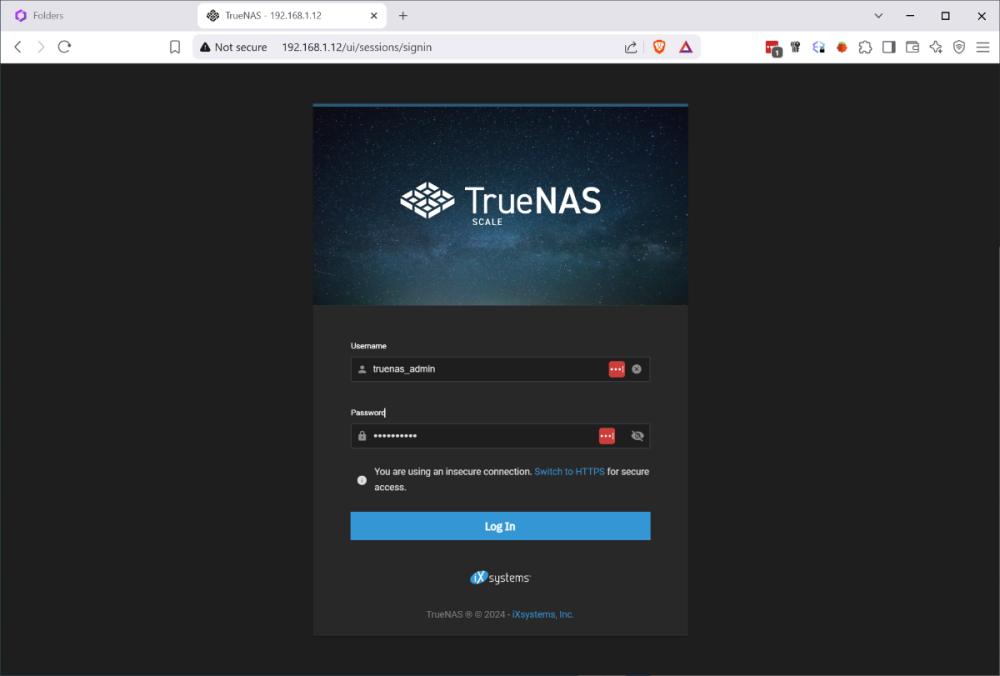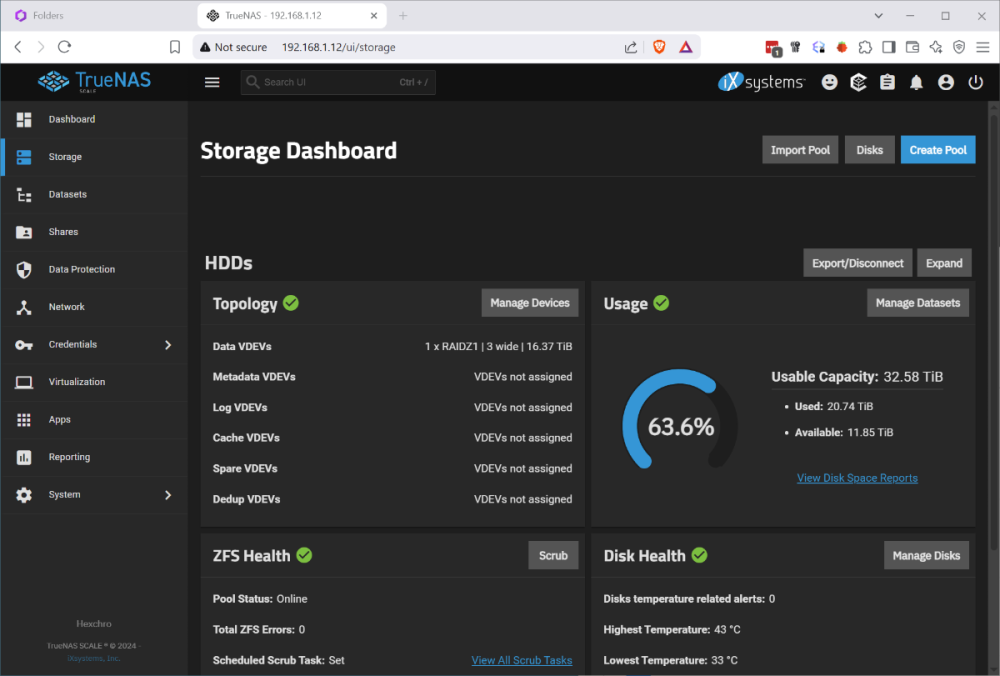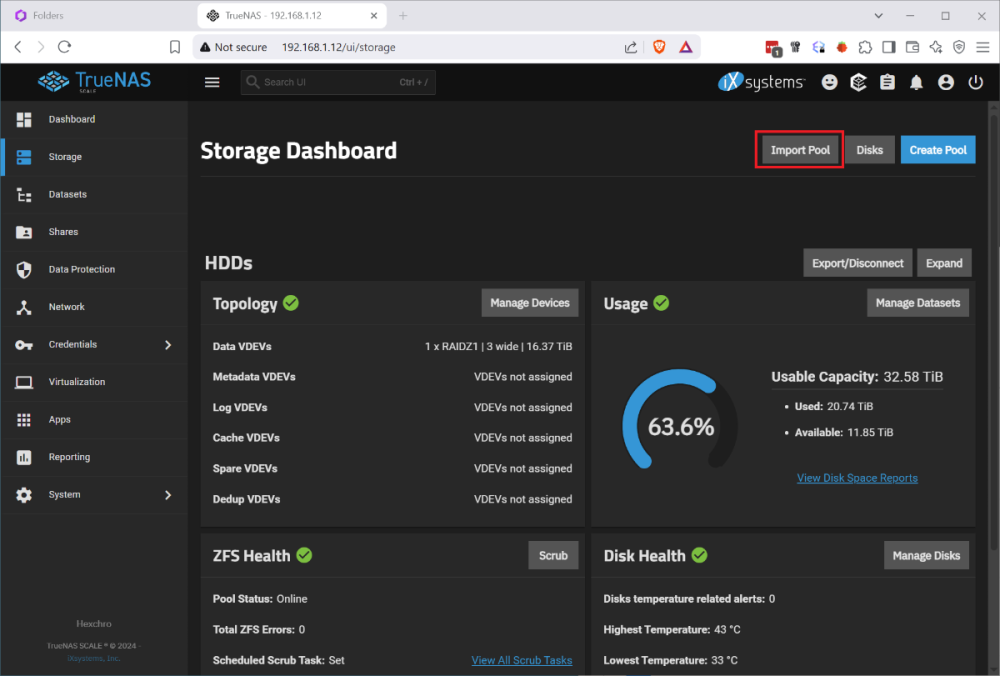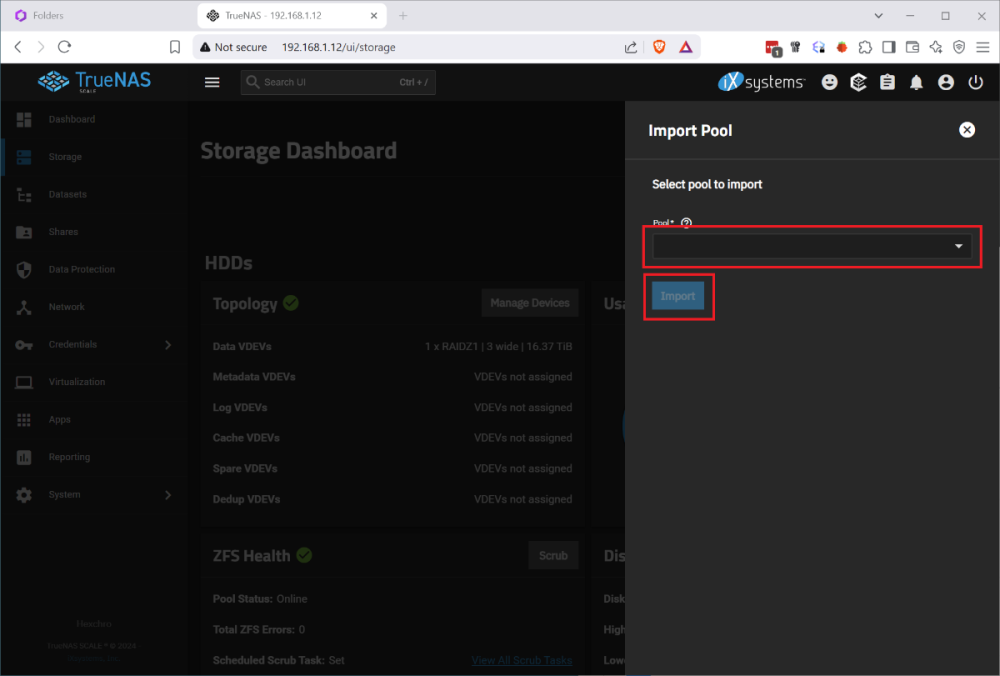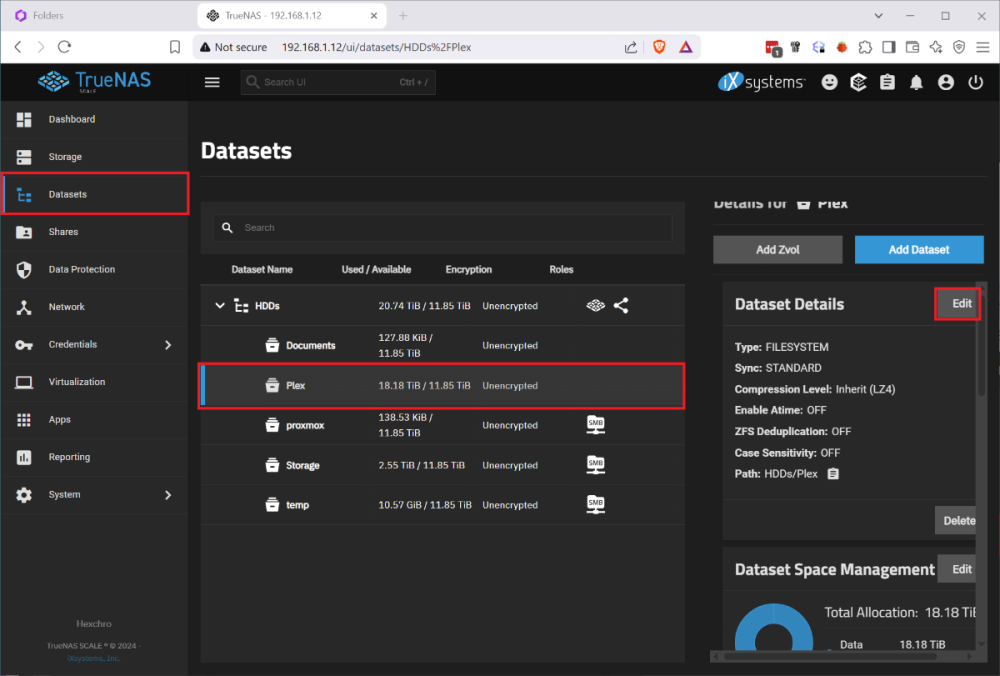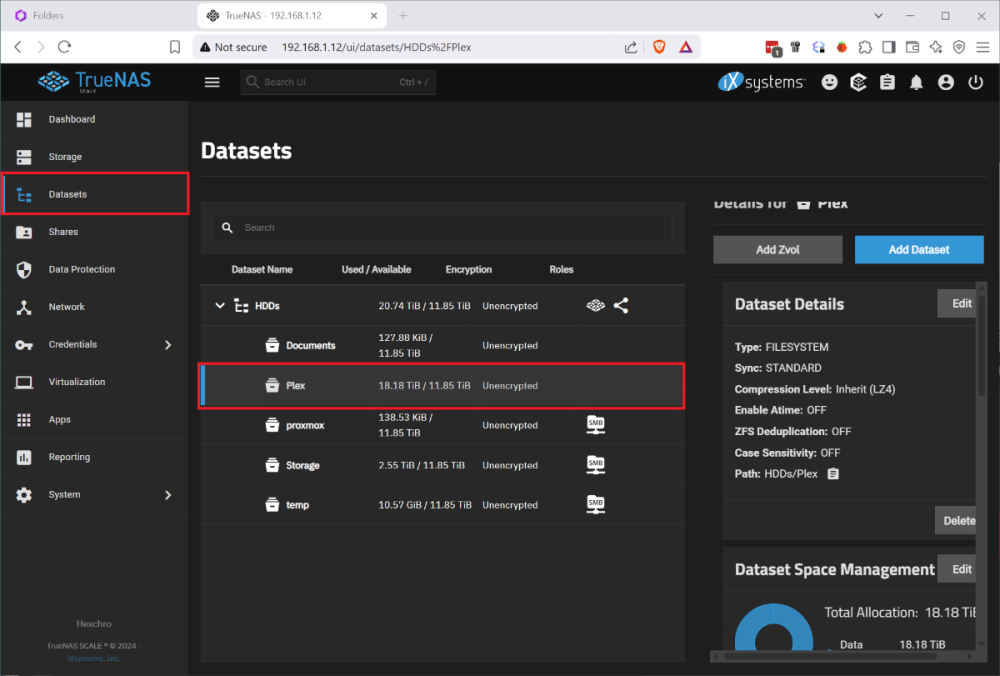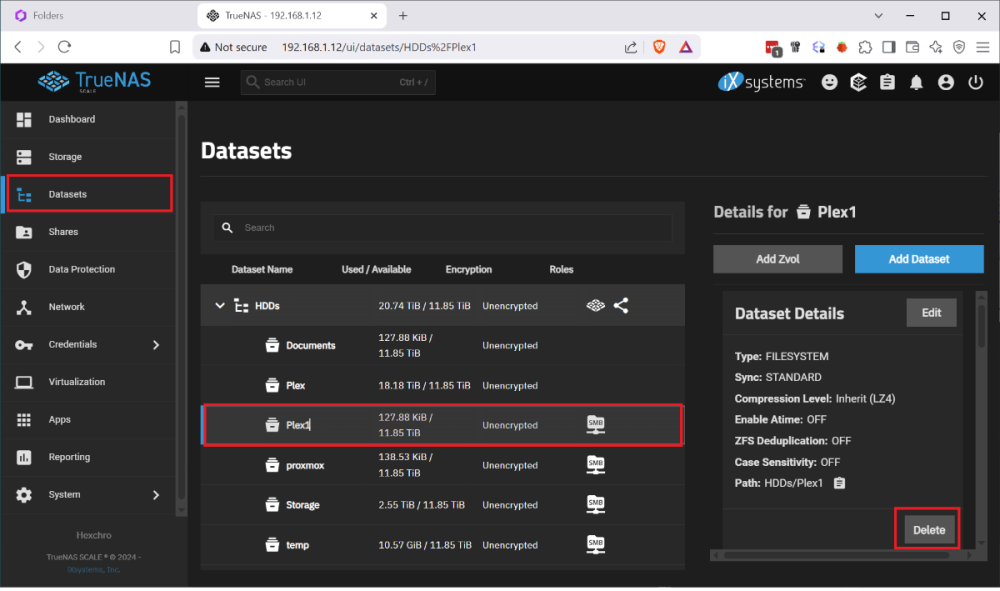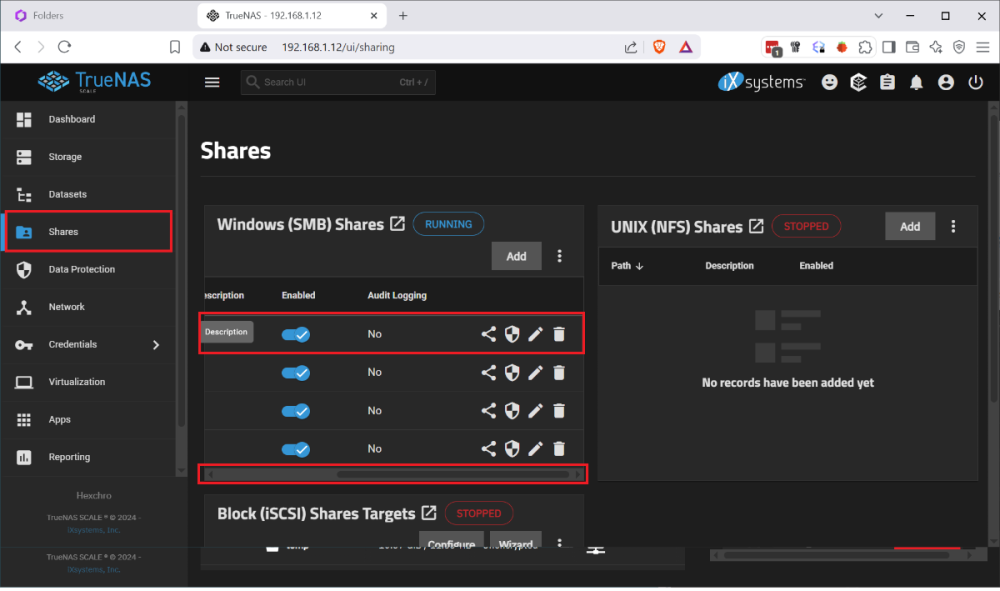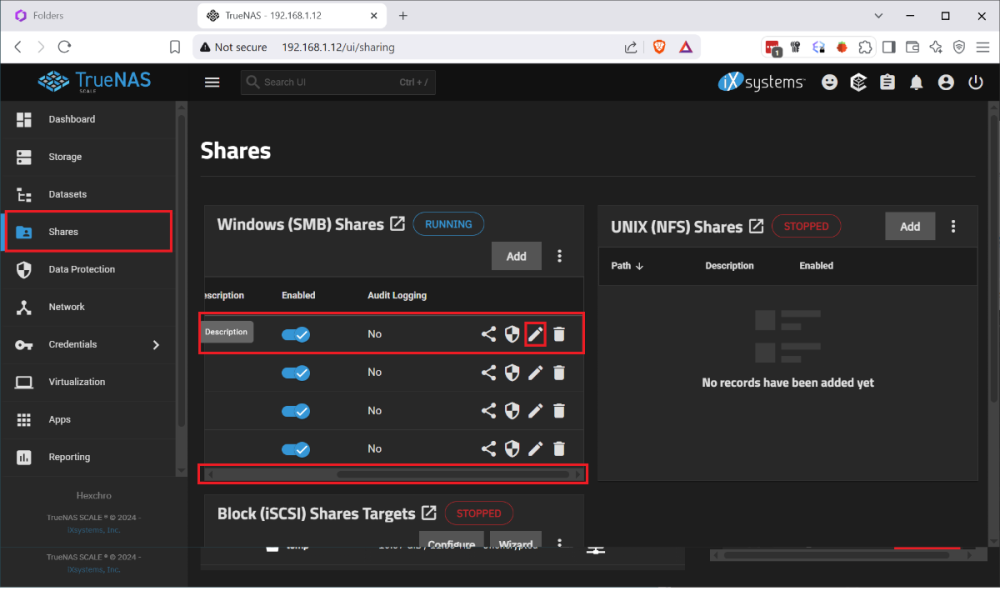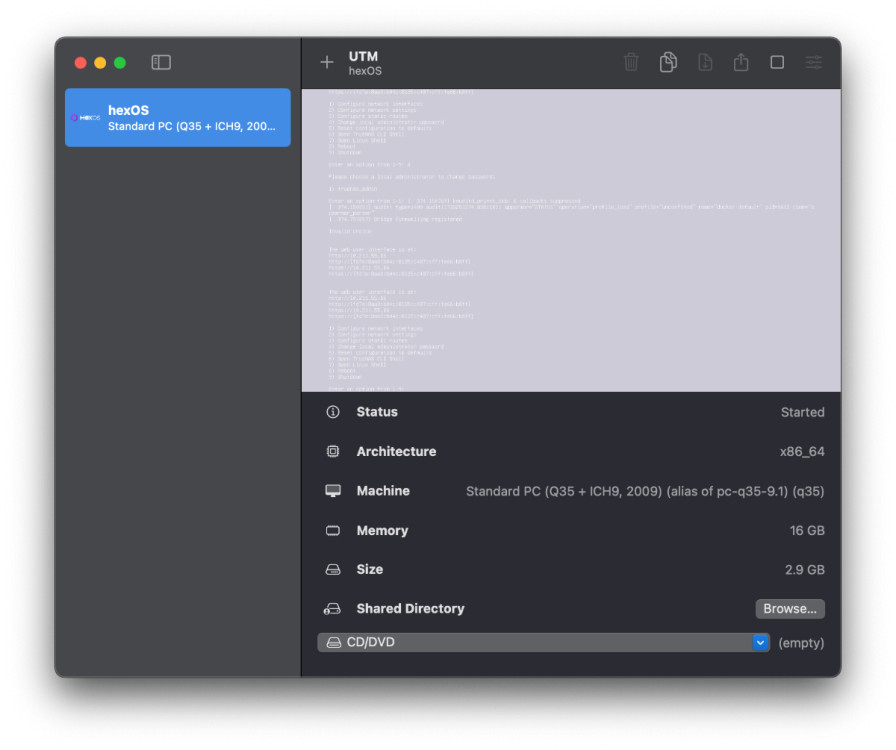Leaderboard
Popular Content
Showing content with the highest reputation on 08/14/25 in all areas
-
100%. We are opening that up this week and doing a little forum reorg. Support forums will still be locked to paid customers only, but announcements will be opened up.1 point
-
I ran into the issue that my boot drive was corrupted and I had to restore my HexOS install from scratch. I found posts that said basically just reinstall it but nothing that explained the process. I had several issues, when I reinstalled HexOS it wanted to wipe my raid, once i disconnected the raid and went through the initial setup, I had no shares. So I wanted to document this so that others with this issue find a solution instead trying to rename and recreate shares and move data between datasets. This was done after I figured out a process for doing this so sorry if I missed any steps. Step 1. Remove the bad boot drive. Step 2: Disconnect the Raid drives. Step 3: Install your new boot drive and usb HexOS install media. Step 4: Follow the standard install process, including setting your admin account and claiming your server. When you finish the setup you will not have any disks so you will name your server and just continue. Step 5: Shutdown the system. Step 6: Reconnect your raid drives and boot up. Step 7: Log in to the TrueNAS gui by going to the IP address of your server in the browser and using the credentials you set up during install Username: truenas_admin Password: <whatever you entered at install>. Step 8: Go to Storage Tab and select Import Pool. 9: Select your pool from the drop down it should be named 'HDDs' and select Import. It will take a few minutes to import and complete. At this point the storage should be detected in HexOS and you should be able to start creating shares, but your existing folders and shares will not have returned. To get your shares back you must recreate them by renaming your datasets and naming them back as follows: Step 1: Under Datasets you can find all of your existing data on the RAID. Find the Dataset you want to restore in HEXOS and note the name. Step 2: Back in HexOS go to the Folder tab and select 'New Folder' Note: you may want to recreate your old users manually or create your folders with public access and recreate the users and add permissions later. Step 3: Create a new folder with the same name as the Dataset but add a 1 (In this case 'Plex1'). Make sure to keep the array the same 'HDDs; and give it the permissions you want (this can be adjusted later). Step 4: Back in TrueNAS go to Shares and select the edit button on the 'Plex1' share, depending on screen resolution you may need to scroll the horizontal scroll bar to the right. Step 5: In the side bar remove the '1' from the Path or use the drop down to select the original shared folder, then click into the Name field which should auto update and remove the 1. Step 6 Scroll down and click 'Save' and you will be prompted to restart the SMB service, do this and your share should be updated. Step 7: Navigate to the dataset tab select the 'Plex1' dataset and click delete on the right side. It will make you confirm by typing the whole dataset path. Step 8: When this is done you should be able to refresh the folders tab on the HexOS page and see the updated folder name (it took a minute to refresh for me). Redo this for each share that you wish to recreate. Once I did this and set up the users and permissions correctly, other servers I used to connect to my shares started working seamlessly. I didn't experience this but I can imagine you may run into some permissions issues since the new users in HexOS could have different IDs than before. Unfortunately you would need to manually adjust permissions on the files and folders. P.S. I imagine minutes after posting this someone will tell me I am dumb and should have done it this way, or someone else posted better over here. If that's the case let me know and Ill point to a better example, but when I needed help I couldn't find it.1 point
-
I'm deeply disappointed to hear this. We did have a banner on the forums for a while pointing to the Q2 update, but the post itself is still where all of our update posts have been going: the Announcements forum. In addition, there have been multiple Command Deck updates since then that have seriously improved deck.hexos.com performance and responsiveness, as well as resolved a significant networking bug. Check out the Announcements forum and specifically posts by @jerod (our CTO). FYI, I'm Jon (the CEO and Co-Founder). Clearly we're missing some simple comm relays (like the Q2 update dropping) and some of our terminology could be more clear (differing from major and minor updates, OS vs. Command Deck as well). I do apologize for that, as comms are ultimately my responsibility right now. I've told our dev team to stay out of the forums beyond reading posts and communicating with @mill3000 on relevant support tickets. No blame on them for their lack of activity here. And while I greatly appreciate your input and desire for a dev-blog, we honestly just don't have the appetite to do it right now. Writing blogs wasn't part of the job description for the dev team either. We're putting all of our effort and the capital that was entrusted to us by customers (like you) towards building the product. I'm not sure what you mean by this comment. Is there an app you're trying to bring to HexOS that you've developed? I get it. You feel strongly about the devlogs. 😮💨 I don't. We're not even making big investments in marketing right now (our website is still the same from after launch week). All the capital is going towards making this thing really great (including backing/funding the ZFS AnyRaid project). Maybe that changes in the future when it makes more sense to me. Right now, each on-the-clock keystroke from our dev team goes to writing code or communicating ideas internally to further the project. I provide updates as I can and when there's something important to say (such as a release dropping). Clearly you're missing some of those and I'm struggling to understand how and why. It's important that I get this sorted because if it's happening to you, I'm sure it's happening to others as well. Especially as we're now moving at a faster pace than we were in the first half of 2025 and anticipate more frequent updates moving forward. I feel this too. 🤦♂️ I see the purchases you made and when you made them. @mill3000 referred to you as an OG and he's not wrong. No worries, I ignored all the BS from your post....mostly ;-). I definitely recommend checking your server for the Q2 update (the Command Deck will immediately be different if you haven't noticed already) and if you haven't, apply the available OS update from the Activity card on the dashboard. We have a lot more in store for Q3. I'm working on a few blog posts now. one to catch everyone up from June, and another to talk about our upcoming plan for apps. Thanks for taking the time to let us know how you're feeling. I'm confident if you purchased based on the vision you saw from us last year, you'll be happy you did by the end of this year. If you ultimately feel sour about this and want a refund now, let me know and we'll take care of it for you.1 point
-
Assuming a user is aware of its existence before the boot drive dies, I would think downloading the TrueNAS configuration file (system - general settings - manage configuration - download file) so it can be imported after reinstall would save some time here. I've never done so, but it claims to contain accounts, shares etc. Personally, I'd consider a user friendly way to recover from boot drive failure to be a core HexOS feature, but I've seen no mention of any plans.1 point
-
1 point
-
1 point
-
Hello, I successfully installed HexOS using UTM on macOS with an Apple M3 CPU (ARM). UTM, which is built on QEMU, allows you to emulate* a different architecture if you’re running something other than ARM. In this case, it was used to emulate x86_64, which is required for HexOS. Notes: • Disable UEFI: Ensure UEFI is disabled in the hypervisor template. • Use BIOS: During the HexOS installation process, do not enable UEFI; choose BIOS instead. • Add Pool Drives Later: Pool drives (IDE) were added after the initial setup. If this step is not followed, the deck may not be able to locate the local server. • App Installation: Apps were added via the TrueNAS interface because the HexOS installation was failing at 60%. • Hardware Settings: • Architecture: x86_64 • System: Standard PC (Q35 + ICH9, 2009) (alias of pc-q35-9.1) (q35) • Emulated Display Card: virtio-vga-gl (GPU Supported)1 point
-
Since its a NAS Software, I would like to see some Data management apps like Jellyfin- for tv, movies and music media Audiobookshelf - for audio media Kavita - for book media Tandoor - for recipies Paperless NGX - for Document sorting Trillium - for Notes BookStack - for wikilike knowledge base HomeBox - for real life storage management 😉 Some reverse proxy with with SSO Other Apps I would like to see but would also be fine with hosting it via dockge ScratchMap - because its fun and I can link to immich folders Vikunja - for kanban style planning exercisediary - for tracking my weights metube to download youtube wallos to plan subscription fees1 point



